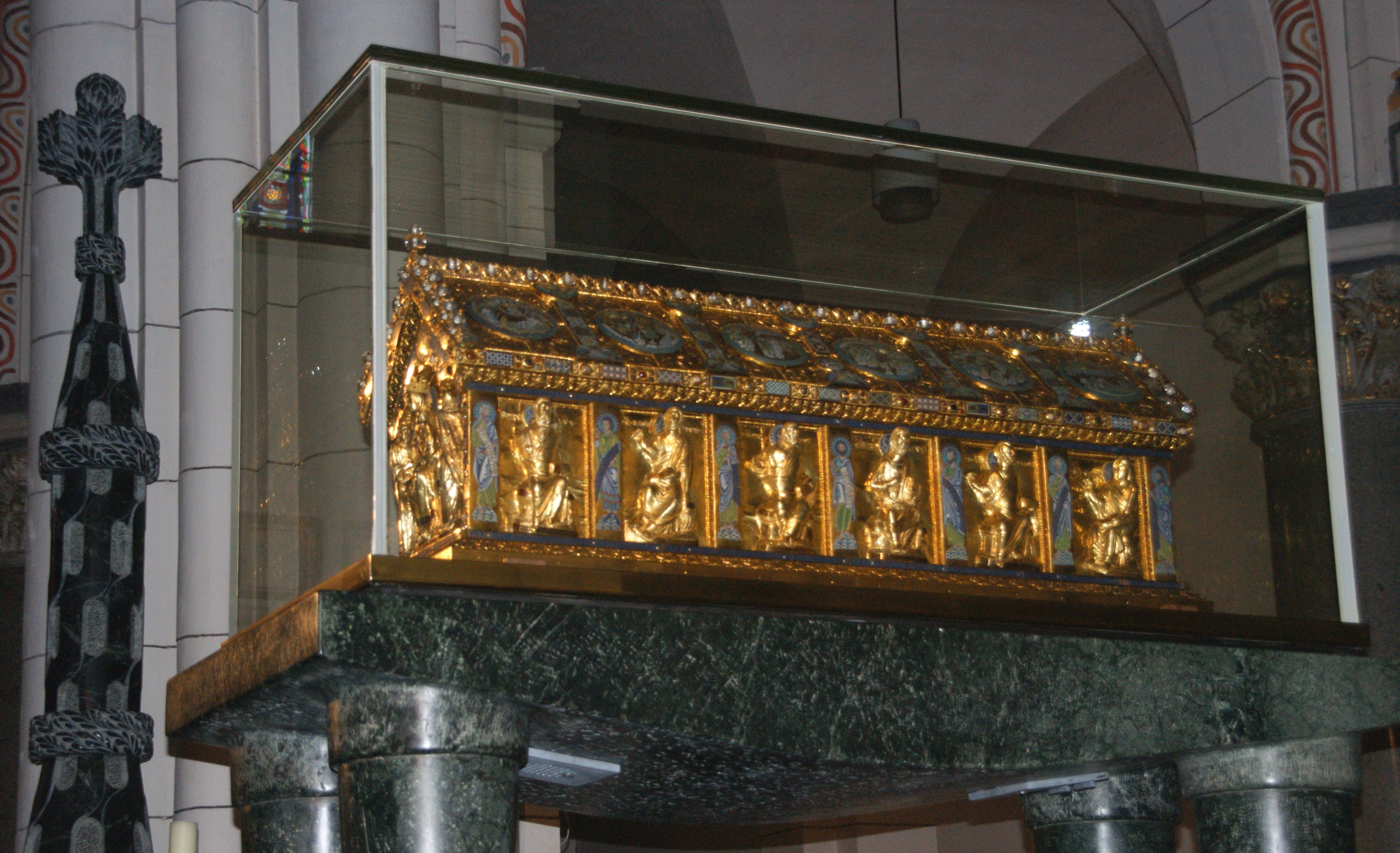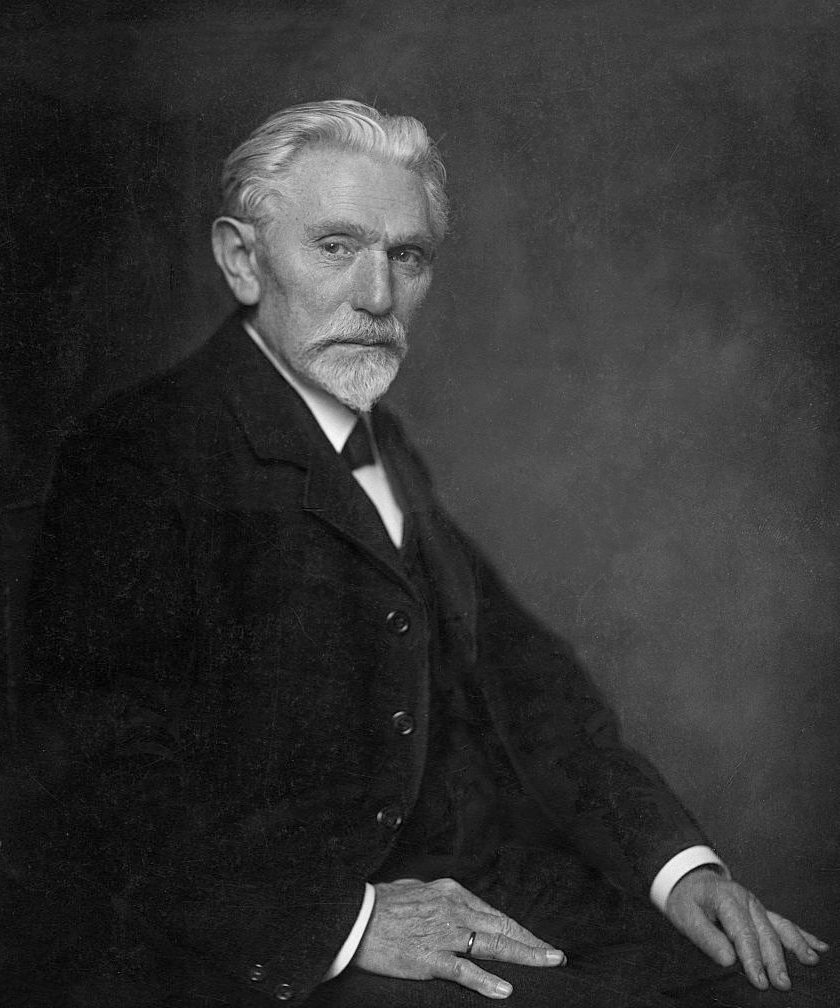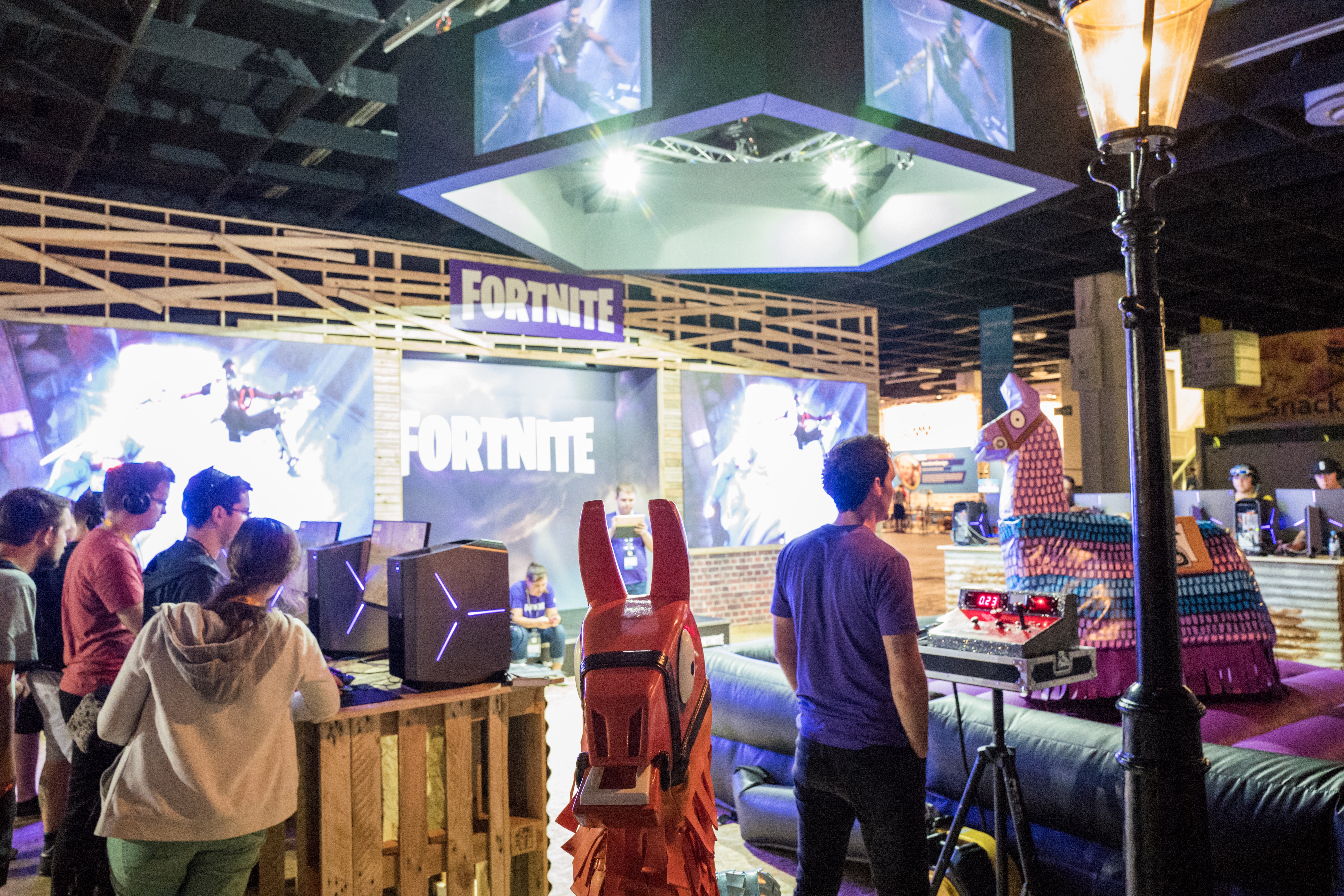|
Köln-Deutz
The Cologne borough of Deutz (german: Köln-Deutz ; ), is a part of central Cologne, Germany, and was once an independent town. History Deutz was established under Roman Emperor Constantine I in 310 AD, when he established ''Castrum Divitia'', a military camp built on the banks of the Rhine across from Colonia Claudia Ara Agrippinensium. Camp and city were linked via a bridge from the same time. During the Middle Ages, Deutz was an important centre of learning in medieval Germany. Up into the early Middle Ages it was known by the Latin name ''Divitia'', from the 10th century as ''Tuitium''. It was located on the right bank of the Rhine, opposite Cologne, which grew up on the left bank. In 1002, the old castle in Deutz was made a Benedictine monastery by Heribert, archbishop of Cologne, and the important abbey was home to many influential theologians, such as Rupert of Deutz. Permission to fortify the town was in 1230 granted to the citizens by the archbishop of Cologne, between ... [...More Info...] [...Related Items...] OR: [Wikipedia] [Google] [Baidu] |
Köln Messe/Deutz Station
Köln Messe/Deutz station (called ''Köln-Deutz'' until November 2004, Colognian: , ) is an important railway junction for long-distance rail and local services in the Cologne district of Deutz in the German state of North Rhine-Westphalia. It is situated close to the eastern bank of the Rhine and connected via the Hohenzollern Bridge to Köln Hauptbahnhof, the city's main station, which is just a few hundred metres away. The Cologne Trade Fair (german: Koelnmesse) grounds are directly north of the station, hence the ''Messe'' in the station's name. The Stadtbahn station of ''Deutz/Messe'' is nearby and connected by a pedestrian tunnel. The station is a junction station, which has platforms on two levels: the high-level platforms are used by trains running in the east-west direction across the Hohenzollern Bridge to and from Köln Hauptbahnhof. The lower level (''Köln Messe/Deutz tief'') is used by trains running in a north-south direction bypassing the Hauptbahnhof from Köln-M� ... [...More Info...] [...Related Items...] OR: [Wikipedia] [Google] [Baidu] |
Heribert Of Cologne
Heribert of Cologne ( 970 – 16 March 1021), also known as Saint Heribert, was a German Roman Catholic prelate who served as the Archbishop of Cologne from 999 until his death. He also served as the Chancellor for the Emperor Otto III since 994. He also collaborated with Henry II, Holy Roman Emperor with whom relations were strained though were strengthened over time. Heribert's canonization was confirmed around 1075. Life Heribert was born around 970 in Worms to Count Hugo and Tietwista. On the maternal side his half-brother was Heinrich who was the Bishop of Würzburg. He was educated in the school at the Worms Cathedral and at the Benedictine Gorze convent in Lorraine. Heribert studied alongside Bruno of Carinthia who was the future Pope Gregory V. He wanted to become a Benedictine monk but his father disapproved of that path and Heribert no longer pursued it. He returned to the Worms Cathedral to serve as its provost and received his ordination to the priesthood in ... [...More Info...] [...Related Items...] OR: [Wikipedia] [Google] [Baidu] |
Deutz Abbey
Deutz Abbey ( or ''Abtei Deutz'') was a Benedictine monastery located at Deutz, now part of Cologne as Köln-Deutz, North Rhine-Westphalia, Germany. It was founded in 1003 on the site of a Roman fort by the future Saint Heribert, Archbishop of Cologne, close adviser of Emperor Otto III. Heribert died in 1021 and was buried in the Romanesque church he had had built here. The theologian Rupert of Deutz was abbot during the 1120s. The abbey had extensive properties, but its strategic position by the Rhine exposed it to involvement in fighting, and it was destroyed in the 14th century and again in the 16th. It was dissolved during the secularisation of the Napoleonic era, but the abbey church, now known as Alt St. Heribert, became a parish church in 1804. In World War II it was heavily damaged and only the ground floor and remnants of the Romanesque cellar were preserved. Reconstruction took place in the 1970s. Today the former abbey accommodates an old people's home run by Cari ... [...More Info...] [...Related Items...] OR: [Wikipedia] [Google] [Baidu] |
Cologne Innenstadt Deutz
Cologne ( ; german: Köln ; ksh, Kölle ) is the largest city of the German western state of North Rhine-Westphalia (NRW) and the fourth-most populous city of Germany with 1.1 million inhabitants in the city proper and 3.6 million people in the urban region. Centered on the left (west) bank of the Rhine, Cologne is about southeast of NRW's state capital Düsseldorf and northwest of Bonn, the former capital of West Germany. The city's medieval Catholic Cologne Cathedral (), the third-tallest church and tallest cathedral in the world, constructed to house the Shrine of the Three Kings, is a globally recognized landmark and one of the most visited sights and pilgrimage destinations in Europe. The cityscape is further shaped by the Twelve Romanesque churches of Cologne, and Cologne is famous for Eau de Cologne, that has been produced in the city since 1709, and "cologne" has since come to be a generic term. Cologne was founded and established in Germanic Ubii terri ... [...More Info...] [...Related Items...] OR: [Wikipedia] [Google] [Baidu] |
Cologne
Cologne ( ; german: Köln ; ksh, Kölle ) is the largest city of the German western States of Germany, state of North Rhine-Westphalia (NRW) and the List of cities in Germany by population, fourth-most populous city of Germany with 1.1 million inhabitants in the city proper and 3.6 million people in the Cologne Bonn Region, urban region. Centered on the left bank of the Rhine, left (west) bank of the Rhine, Cologne is about southeast of NRW's state capital Düsseldorf and northwest of Bonn, the former capital of West Germany. The city's medieval Catholic Cologne Cathedral (), the third-tallest church and tallest cathedral in the world, constructed to house the Shrine of the Three Kings, is a globally recognized landmark and one of the most visited sights and pilgrimage destinations in Europe. The cityscape is further shaped by the Twelve Romanesque churches of Cologne, and Cologne is famous for Eau de Cologne, that has been produced in the city since 1709, and "col ... [...More Info...] [...Related Items...] OR: [Wikipedia] [Google] [Baidu] |
Lanxess Arena
Lanxess Arena (originally Kölnarena, German for ''Cologne Arena'') is an indoor arena, in Cologne, North Rhine-Westphalia, Germany. It is known as the 18,500-capacity home of the Kölner Haie. The arena opened in 1998 and can accommodate 20,000 people for concerts. With its capacity of 18,500, it is the largest ice hockey arena outside North America. It is primarily used by Kölner Haie (ice hockey), VfL Gummersbach (handball), Köln RheinStars (basketball), and as a concert venue. The arena is spanned by a steel arch supporting the roof via steel cables. The height of the arch is and its weight is 480 tons. On June 2, 2008, it was announced that Kölnarena would be renamed Lanxess Arena, for a period of ten years. The sponsor, Lanxess AG, is a specialty chemicals group based in the Lanxess Tower in Deutz, Cologne. Concerts Lanxess Arena has been one of the top entertainment venues in Cologne since its opening. Many international artists have performed at the venue, spanni ... [...More Info...] [...Related Items...] OR: [Wikipedia] [Google] [Baidu] |
Rupert Of Deutz
Rupert of Deutz ( la, Rupertus Tuitiensis; c. 1075/1080 – c. 1129) was an influential Benedictine theologian, exegete and writer on liturgical and musical topics. Life Rupert was most likely born in or around Liège in the years 1075-1080, and there, as was the custom, was brought by his family as an oblate to the Benedictine abbey of Saint-Laurent in Liège, which already a generation earlier had become a notable centre of learning, including mathematics, hagiography, and poetry. There Rupert eventually made monastic profession and was educated under the capable Abbot, Berengar. In 1092, in the context of the conflict between the papacy and the Empire, known as the Investiture Controversy, which in Germany encompassed nearly 50 years of civil war (1076-1122), Rupert joined other monks in following their abbot, Berengar, into exile in northern France, from where he returned in 1095. According to differing sources, around 1106 or 1109 he was ordained a priest by the Bis ... [...More Info...] [...Related Items...] OR: [Wikipedia] [Google] [Baidu] |
Eugen Langen
Carl Eugen Langen (9 October 1833 in Cologne – 2 October 1895 in Elsdorf) was a German entrepreneur, engineer and inventor, involved in the development of the petrol engine and the Wuppertal Suspension Railway. In 1857 he worked in his father's sugar factory, JJ Langen & Söhne, and after extensive technical training at the Polytechnic institute in Karlsruhe, patented a method for producing sugar cubes. He sold this method in 1872 to Sir Henry Tate of England, founder of the Tate Gallery in London. Otto and Langen In 1864, Langen met Nicolaus August Otto who was working to improve to the gas engine invented by Belgian Etienne Lenoir. The technically–trained Langen recognized the potential of Otto's development, and one month after the meeting, founded the first engine factory in the world, NA Otto & Cie. At the 1867 Paris World Exhibition, their improved engine received the Grand Prize. Deutz After this first factory went bankrupt, Langen founded a new company for the co ... [...More Info...] [...Related Items...] OR: [Wikipedia] [Google] [Baidu] |
August Bebel
Ferdinand August Bebel (22 February 1840 – 13 August 1913) was a German socialist politician, writer, and orator. He is best remembered as one of the founders of the Social Democratic Workers' Party of Germany (SDAP) in 1869, which in 1875 merged with the General German Workers' Association into the Socialist Workers' Party of Germany (SAPD). During the repression under the terms of the Anti-Socialist Laws, Bebel became the leading figure of the social democratic movement in Germany and from 1892 until his death served as chairman of the Social Democratic Party of Germany. Biography Early years Ferdinand August Bebel, known as August, was born on 22 February 1840, in Deutz, Germany, now a part of Cologne. He was the son of a Prussian noncommissioned officer in the Prussian infantry, initially from Ostrowo in the Province of Posen, and was born in military barracks. The father died in 1844. As a young man, Bebel apprenticed as a carpenter and joiner in Leipzig."August Be ... [...More Info...] [...Related Items...] OR: [Wikipedia] [Google] [Baidu] |
August Lemmer
August Lemmer (1862 – date of death unknown) was a German artist. Lemmer was born in Deutz, Rhenish Prussia. After studying at the art academy of Karlsruhe from 1888–92 he remained in the capital of the Grand Duchy of Baden. Lemmer made his name as a painter of impressionistic landscape, seascape, and city views. Numerous paintings of Lemmer's date from the late 19th and early 20th centuries. He often painted images of Carniola, Trieste, Venice, and German cities such as Munich Munich ( ; german: München ; bar, Minga ) is the capital and most populous city of the States of Germany, German state of Bavaria. With a population of 1,558,395 inhabitants as of 31 July 2020, it is the List of cities in Germany by popu .... Lemmer also often painted images of fishing boats off the coast of Venice. References {{DEFAULTSORT:Lemmer, August 1862 births 20th-century deaths 19th-century German painters 19th-century German male artists German male painters 20t ... [...More Info...] [...Related Items...] OR: [Wikipedia] [Google] [Baidu] |
Cologne Trade Fair
Koelnmesse GmbH (''Cologne Trade Fair'') is an international trade fair and exhibition center located in Cologne, North Rhine-Westphalia, Germany. With around 80 trade fairs and over 2,000 conferences annually, Koelnmesse is one of the country's largest trade fair organisers and with 284,000 m² exhibition floor area the third largest by area. The Cologne Trade Fair ground was founded in 1922. Until 2005, the trade fair was based in the historic Rheinhallen, and since then moved into new premises next to them. The old Fair Tower Cologne (''Messeturm Köln'') is a landmark building from 1928 and features a tower restaurant on the top floor. Since 2018, the fair has been undergoing the greatest renovation works in its history. They are expected to last until 2030 and cost €600 million. Two thirds of that amount will be spent renovating the seven southern halls, dating from the 1970s. Trade fairs The following trade fairs, among others, are held in Cologne: * Anuga, the world ... [...More Info...] [...Related Items...] OR: [Wikipedia] [Google] [Baidu] |
Rheinpark
The Rheinpark (meaning: ''Rhine park'') is a 40 hectare (0,4 km²) large urban park along the right bank of the river Rhine in Cologne, Germany. The park lies between the Cologne districts of Deutz and Mülheim and includes a beach club, an open-air theater (the ''Tanzbrunnen'') and a Roman ''Thermae'' styled public bath (the ''Claudius-Therme''). It was voted Germany's best park in 2007. History Originally laid out according to plans by landscape architectFritz Encke
Fritz originated as a German nickname for Friedrich, or Frederick (''Der Alte Fritz'', and ''Stary Fryc'' were common nicknames for King Frederick II of Prussia and Frederick ...
[...More Info...] [...Related Items...] OR: [Wikipedia] [Google] [Baidu] |







